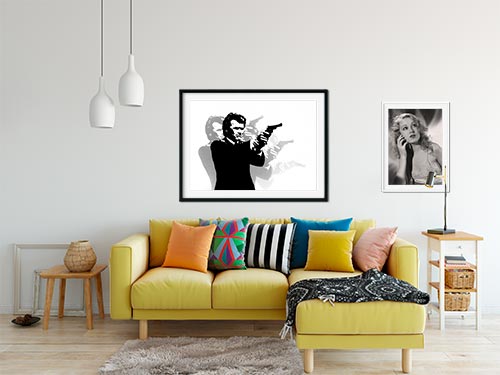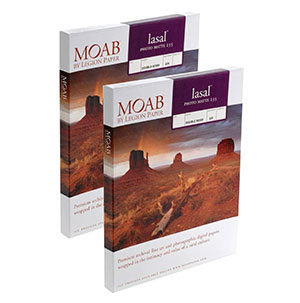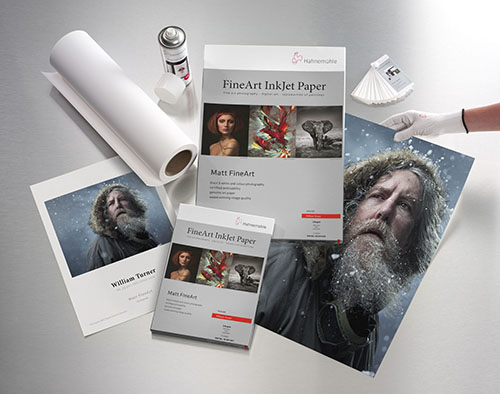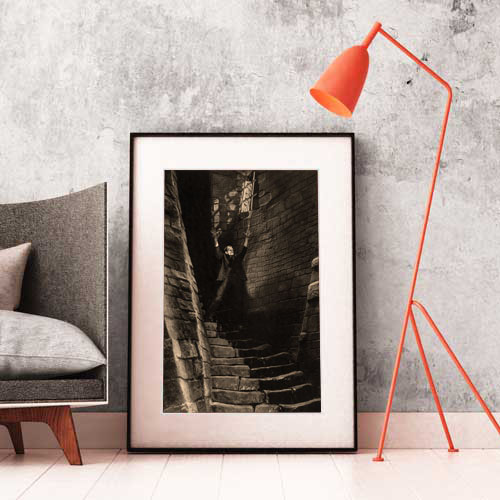Very rare "behind the scenes" publicity shot featuring Martine Beswick (Paula Caplan) sitting on the edge of a small boat in her one piece zebra stripe bathing suit. Here, she's taking a break to soak in rays from the bright sun while relaxing in the ocean (Nassau, Bahamas).
Thunderball is a 1965 spy film and the fourth in the James Bond series produced by Eon Productions, starring Sean Connery as the fictional MI6 agent James Bond. It is an adaptation of the 1961 novel of the same name by Ian Fleming, which in turn was based on an original screenplay by Jack Whittingham devised from a story conceived by Kevin McClory, Whittingham, and Fleming. It was the third and final Bond film to be directed by Terence Young, with its screenplay by Richard Maibaum and John Hopkins. The film followed Goldfinger (1964) and was followed by You Only Live Twice (1967).
The film follows Bond's mission to find two NATO atomic bombs stolen by SPECTRE, which holds the world for ransom of £100 million in diamonds under its threat to destroy an unspecified metropolis in either the United Kingdom or the United States (later revealed to be Miami). The search leads Bond to the Bahamas, where he encounters Emilio Largo, the card-playing, eye-patch-wearing SPECTRE Number Two. Backed by CIA agent Felix Leiter and Largo's mistress, Domino Derval, Bond's search culminates in an underwater battle with Largo's henchmen. The film's complex production comprised four different units and about a quarter of the film comprises underwater scenes. Thunderball was the first Bond film shot in widescreen Panavision and the first to have a running time of over two hours.
The film was exceptionally successful: its worldwide box office receipts of $141.2 million exceeded not only that of each of its predecessors but that of every one of the five Bond films that followed it. Thunderball remains the most financially successful film of the series in North America when adjusted for ticket price inflation. In 1966, John Stears won the Academy Award for Best Visual Effects and BAFTA nominated production designer Ken Adam for an award. Some critics and viewers praised the film and branded it a welcome addition to the series, while others found the aquatic action repetitious. The movie was followed by 1967's You Only Live Twice. In 1983, Warner Bros. released a second film adaptation of the Thunderball novel under the title Never Say Never Again, with McClory as executive producer.
Guy Hamilton was invited to direct, but considered himself worn out and "creatively drained" after the production of Goldfinger. Terence Young, director of the first two Bond films, returned to the series. Coincidentally, when Saltzman invited him to direct Dr. No, Young expressed interest in directing adaptations of Dr. No, From Russia with Love and Thunderball. Years later, Young said Thunderball was filmed "at the right time", considering that if it was the first film in the series, the low budget (Dr. No cost only $1 million) would not have yielded good results. Thunderball was the final James Bond film directed by Young.
Product Enquiry
Kodak Professional Endura Paper
Kodak Endura papers provide an incredible amount of detail and smooth transition of tones. Designed for the professional photographer in mind, looking for a more traditional photo print style, Kodak Endura provides an extended print life and color gamut almost at the level of a high end fine art paper print.
Archival Matte Paper
Archival Matte Paper, also known as Moab Lasal Photo Matte, is our house stock fine art paper and is an economical favorite for fine art reproductions and photo prints. It features a smooth surface, heavy weight (230 g, 9.5-mil), neutral white, matte paper engineered for accurate color reproduction that provides high contrast and high-resolution output. This paper is acid-free, making it the perfect choice for both photography & fine art reproductions.
Giclee William Turner Paper by Hahnemühle
The William Turner by Hahnemühle is one of the most popular papers used in the Giclee printing industry. This is a 310g natural white mould made natural line paper with 100% rag content making it highly archival. It has a slight coarse texture which gives photos and artwork an elegant look. These fine art paper prints (also known as Giclee) are ordered by galleries, individual artists and photographers. The papers and inks are not only archival but use some of the most accurate print technology for full color prints.
- Giclee prints use very expensive archival pigmented inks.
- Highest level of color gamut available in printing (12 color printing).
- Exceptional black & white printing.
- Fade resistant, pigmented inks which provide a superior color range compared to other types of inks. Widely preferred in fine art and photography circles.
- We ONLY use professional grade fine art and photo paper that resist yellowing and aging.



Framing
We offer wood and metal frames, custom cut & joined to order. Each framed print includes hanging hardware and foamcore backer.
Matting
We use conservation grade 100% virgin alpha-cellulose 2 ply mats with white core. Acid-free and lignin-free, these are both face resistant and meet all conservation quality standards set by the Fine Art Trade Guild. Mats are digitally cut for ultimate precision. The window will be 1/8″ smaller than the print dimensions.
Glazing (Acrylic Glass)
We offer custom cut panes of shatter-proof, acrylic glass, to protect your valuable artwork and prints.
Premium Clear
Framing grade clear acrylic is shatter resistant and lightweight.
Reflection Control
With its matte finish, Tru Vue Reflection Control® Acrylic scatters light to diminish unwanted glare.
Conservation Clear
Tru Vue Conservation Clear® Acrylic is a framing industry staple, blocking up to 99% of UV rays for ultimate protection.
Conservation Reflection Control
Tru Vue Conservation Reflection Control® Acrylic scatters and diffuses light to reduce unwanted glare. Blocks up to 99% of UV rays.







